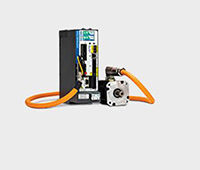Washington State University researchers have developed an environmentally-friendly, plant-based material that for the first time works better than Styrofoam for insulation.
The foam is mostly made from nanocrystals of cellulose, the most abundant plant material on earth. The researchers also developed an environmentally friendly and simple manufacturing process to make the foam, using water as a solvent instead of other harmful solvents.
The work, led by Amir Ameli, assistant professor in the School of Mechanical and Materials Engineering, and Xiao Zhang, associate professor in the Gene and Linda School of Chemical Engineering and Bioengineering, is published in the journal Carbohydrate Polymers.
Researchers have been working to develop an environmentally friendly replacement for polystyrene foam, or Styrofoam. The popular material, made from petroleum, is used in everything from coffee cups to materials for building and construction, transportation, and packaging industries. But, it is made from toxic ingredients, depends on petroleum, doesn’t degrade naturally, and creates pollution when it burns.
While other researchers have created other cellulose-based foams, the plant-based versions haven’t performed as well as Styrofoam. They are not as strong, don’t insulate as well, and degraded at higher temperatures and in humidity. To make cellulose nanocrystals, researchers use acid hydrolysis, in which acid is used to cleave chemical bonds.
In their work, the WSU team created a material that is made of about 75 percent cellulose nanocrystals from wood pulp. They added polyvinyl alcohol, another polymer that bonds with the nanocellulose crystals and makes the resultant foams more elastic. The material that they created contains a uniform cellular structure that means it is a good insulator. For the first time, the researchers report, the plant-based material surpassed the insulation capabilities of Styrofoam. It is also very lightweight and can support up to 200 times its weight without changing shape. It degrades well, and burning it doesn’t produce polluting ash.
“We have used an easy method to make high-performance, composite foams based on nanocrystalline cellulose with an excellent combination of thermal insulation capability and mechanical properties,” Ameli said. “Our results demonstrate the potential of renewable materials, such as nanocellulose, for high-performance thermal insulation materials that can contribute to energy savings, less usage of petroleum-based materials, and reduction of adverse environmental impacts.”
“This is a fundamental demonstration of the potential of nanocrystalline cellulose as an important industrial material,” Zhang said. “This promising material has many desirable properties, and to be able to transfer these properties to a bulk scale for the first time through this engineered approach is very exciting.”
The researchers are now developing formulations for stronger and more durable materials for practical applications. They are interested in incorporating low-cost feedstocks to make a commercially viable product and considering how to move from laboratory to a real-world manufacturing scale.
Filed Under: Materials • advanced, MOTION CONTROL




